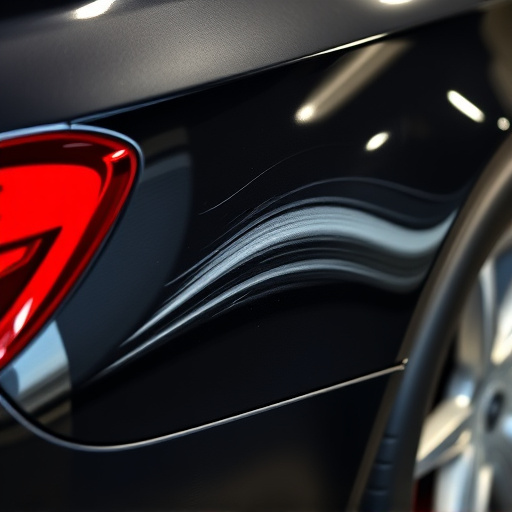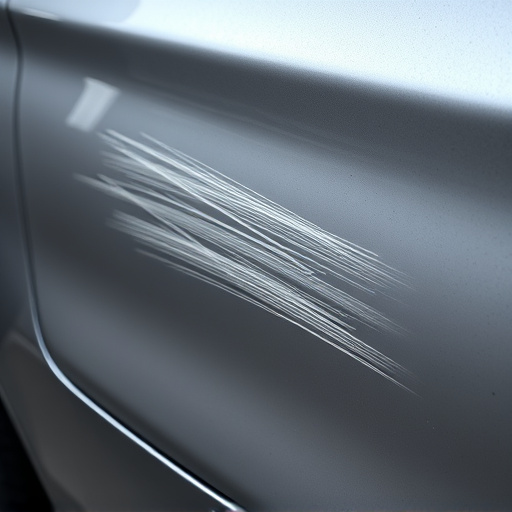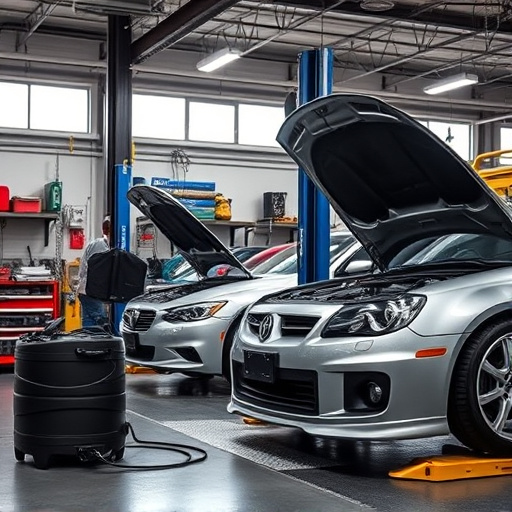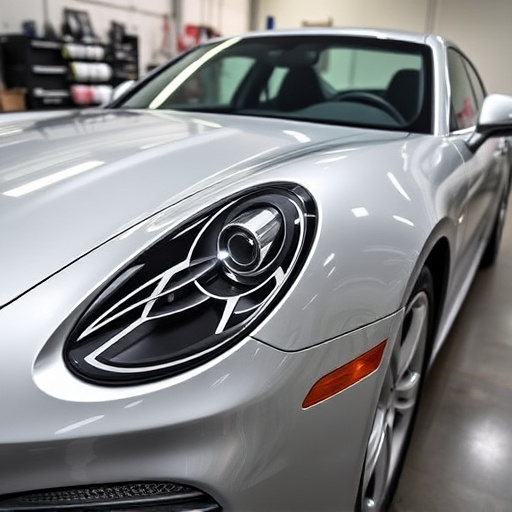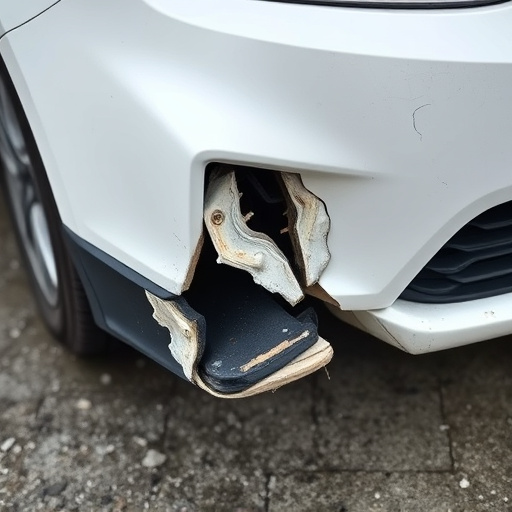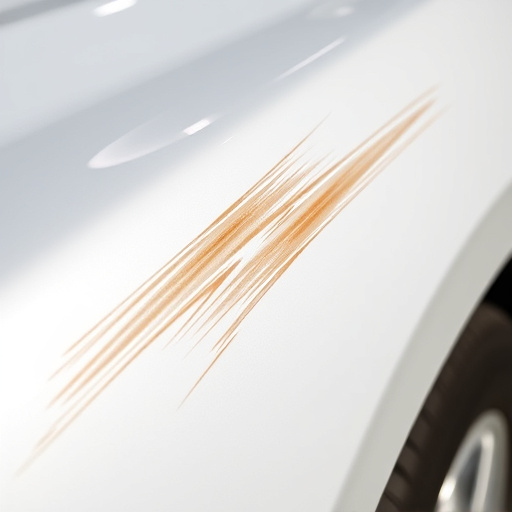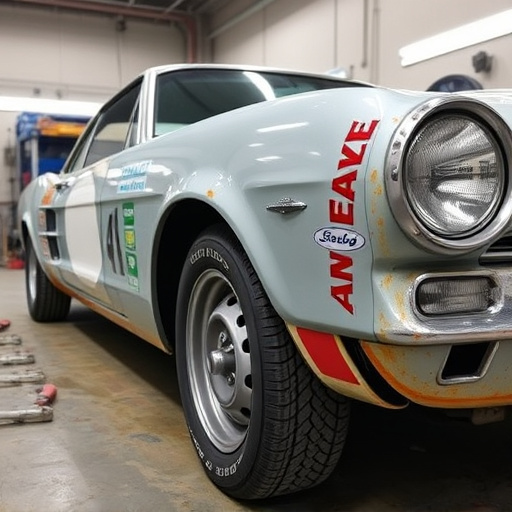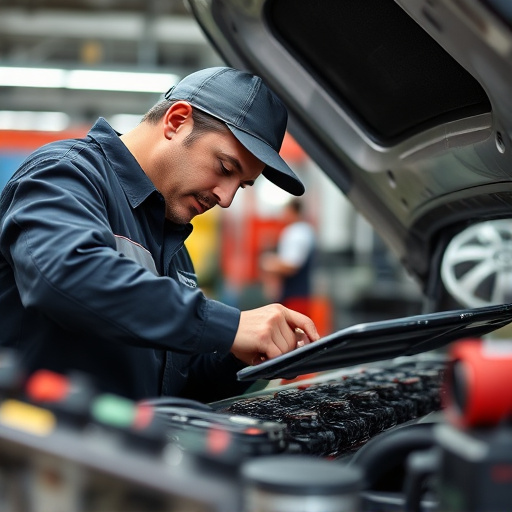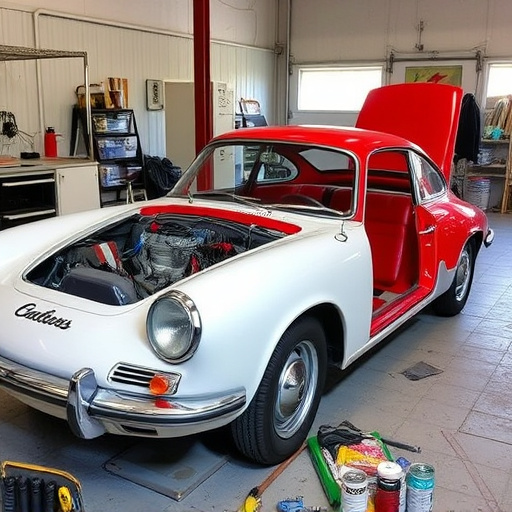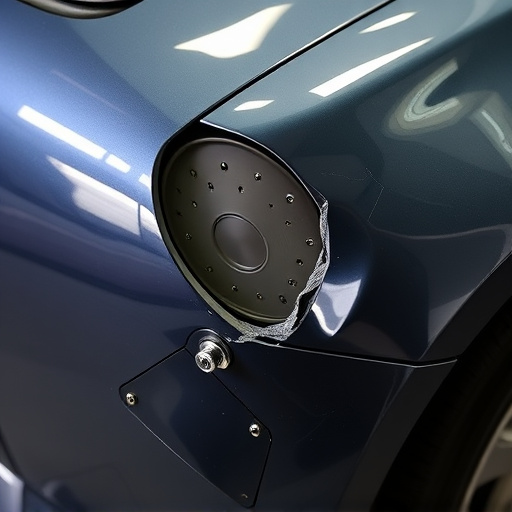Repairing Mercedes carbon fiber parts requires skilled technicians who understand the importance of replicating unique weave patterns, such as 2×2 or 4×4, for both structural integrity and visual appeal. This meticulous process involves specialized tools, precise alignment, and following detailed guides to ensure new components blend seamlessly with existing materials, preserving the Mercedes' identity and performance. By adhering to these steps in a collision center, auto repair shops can restore the original aesthetic and design integrity of Mercedes carbon fiber parts through meticulous auto detailing.
In the realm of luxury automotive restoration, Mercedes carbon fiber parts stand out for their lightweight strength and sleek aesthetics. However, repairing these components requires meticulous attention to detail, especially when matching the intricate weave patterns. This article delves into the significance of aligning weave during Mercedes carbon fiber repair, offering a comprehensive guide to ensure precise results. From understanding part specifications to step-by-step techniques, learn how to master this specialized skill for top-tier repairs.
- Understanding Mercedes Carbon Fiber Parts and Their Weave Patterns
- The Importance of Matching Weave During Repair
- Step-by-Step Guide to Achieving Precise Weave Matching
Understanding Mercedes Carbon Fiber Parts and Their Weave Patterns

Mercedes carbon fiber parts are renowned for their superior strength-to-weight ratio and sleek aesthetics, making them a popular choice in automotive design. When it comes to repair, understanding the unique weave patterns inherent in these components is crucial. Carbon fiber weaves, such as the common 2×2 or 4×4 patterns, serve both structural and visual purposes. Each pattern creates a distinct visual appeal while ensuring optimal reinforcement.
Properly matching the weave pattern during repair is an art. Skilled technicians must carefully replicate the original design to maintain the vehicle’s structural integrity and aesthetic value. This meticulous process involves using specialized tools and techniques to create carbon fiber repairs that blend seamlessly with the existing bodywork services, ensuring a flawless finish. It’s not just about auto maintenance; it’s about preserving the car’s identity and performance characteristics.
The Importance of Matching Weave During Repair

When repairing or replacing Mercedes carbon fiber parts, matching the weave pattern is paramount to achieving a seamless finish. Carbon fiber’s distinctive look and strength are derived from its intricate woven structure. This intricate design must be precisely replicated during the repair process to maintain both aesthetics and structural integrity. A skilled auto repair shop specializing in mercedes benz repair understands this critical aspect, ensuring that the new carbon fiber components blend seamlessly with the existing material.
Proper matching involves not just replicating the visual pattern but also understanding the tension and alignment of each thread. Car repair services that excel in this area employ specialized techniques and tools to analyze and match the original weave. This meticulous approach guarantees that the repaired or replaced part not only looks identical to the rest of the vehicle but also performs at the same high level, providing durability and longevity that customers expect from Mercedes-Benz vehicles.
Step-by-Step Guide to Achieving Precise Weave Matching

To achieve precise weave matching during Mercedes carbon fiber repair, follow this step-by-step guide. Begin by gathering high-quality Mercedes carbon fiber parts and ensuring they are clean and free from any debris or contaminants. Next, carefully examine the existing weave pattern on your vehicle’s panel to identify unique characteristics like thread direction and fiber orientation.
Create a detailed template of the weave pattern using tracing paper or specialized software tools. This template will serve as your reference during the repair process. When repairing or replacing carbon fiber panels, align the new part with the template, ensuring every detail matches precisely. Employ expert techniques like dry fitting to verify the fit before applying adhesive. By adhering to these steps in a collision center or car body shop, you can restore your Mercedes’ original aesthetic and maintain its iconic design integrity through meticulous auto detailing.
When repairing Mercedes carbon fiber parts, achieving a precise weave match is paramount to ensure the integrity and aesthetic appeal of the final product. By understanding the unique weave patterns characteristic of these high-performance materials and following a meticulous step-by-step guide, technicians can master the art of repair, preserving both the structural soundness and visual sophistication of Mercedes carbon fiber components. This attention to detail is what sets apart superior repairs, allowing vehicle owners to experience the strength and elegance of carbon fiber seamlessly integrated into their Mercedes.
